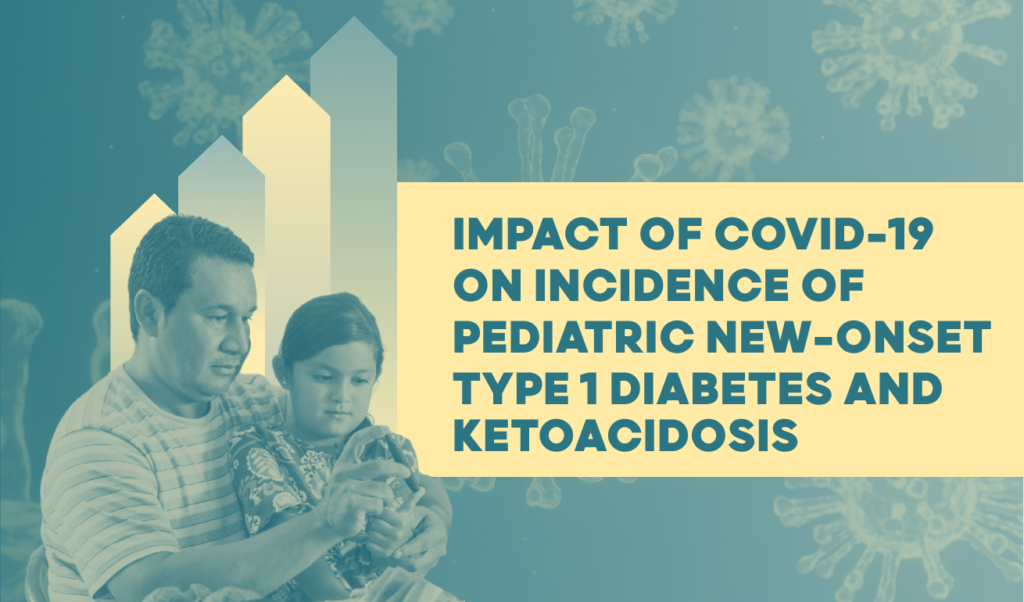The global impact of COVID-19 pandemic on the incidence of pediatric new-onset type 1 diabetes and ketoacidosis: A systematic review and meta-analysis.
Published Date:
13 July, 2022.
Published By:
Masoud Rahmati, Maryam Keshvari, Shahrzad Mirnasuri, Dong K. Yon, Seung W. Lee, Jae Il Shin, Lee Smith
Approved By:
Prof. May NG
Decoded By:
Asra H. Ahmed MBA, PGCE in Assessment Learning disability, Diabesties Foundation
10 mins to read
- The T1D Takeaway
- Twenty-four studies involving 5671 new T1D patients reported numbers of pediatric new-onset T1D before and after the COVID-19 pandemic direct us into following up on children who have experienced Covid-19 over an extended period.
- Continuous and repeated educational diabetes awareness of early signs and symptoms should be delivered to physicians, caregivers, and the public .
Word Wizard
- This meta-analysis seeks to assess the risk associated with global pediatric new-onset Type 1 Diabetes (T1D), DKA, and severe DKA in the context of the pre-and post-COVID-19 pandemic periods.
- Databases analysis from MEDLINE/PubMed, CINAHL, Scopus, and EMBASE was conducted, covering articles published up to March 2022. As well as a random-effects meta-analysis was executed to compare the relative risk of T1D and DKA in pediatric population who were later diagnosed with type 1 diabetes.
- HbA1c values in children who were newly diagnosed with T1D before and after the COVID-19 pandemic was also compared and evaluated.
- New-onset T1D, DKA, and severe DKA increased by 9.5%, 25%, and 19.5%, respectively. Additionally, post-pandemic levels saw a median increase of 6.43% in glucose values and 6.42% in HbA1c values among children newly diagnosed with T1D.

Summary Snap
Shots
The COVID-19 pandemic has markedly elevated the chances of new-onset T1D, DKA, and severe DKA in the global pediatric population. Additionally, the increased levels of glucose and HbA1c in children newly diagnosed with T1D in the post-pandemic era necessitate specific efforts to enhance awareness among both the public and medical professionals.
Prime Insight
Incidence of Pediatric New-Onset T1D:
- The global incidence rate of T1D in 2019 was 19.73 per 100,000 children.
- In 2020, during the COVID-19 pandemic, the incidence of T1D increased to 32.39 per 100,000 children.
- Compared to the pre-COVID-19 period, the number of newly diagnosed pediatric T1D cases increased by 9.5% during the first year of the pandemic.
Glucose and HbA1c Levels:
- Glucose levels in newly diagnosed T1D children after the COVID-19 pandemic increased by 6.43% compared to the pre-pandemic period.
- HbA1c values in newly diagnosed T1D children also increased by 6.42% during the pandemic.
This meta-analysis highlights a significant increase in pediatric new-onset T1D, DKA, and severe DKA during the first year of the COVID-19 pandemic, suggesting the need for greater awareness, monitoring, and early intervention in pediatric diabetes care.

Potential Hypothesis: The study suggests a hypothesis that SARS-CoV-2 (the virus causing COVID-19) might act as a stimulus for the autoimmune system, potentially triggering T1D in among genetically predisposed individuals.
Implications:
- The findings emphasized the importance of raising public and physician awareness about T1D symptoms.
- Telemedicine and improved healthcare technology should be utilized to address concerns about COVID-19 and ensure timely diagnosis.
Limitations:
- The study only covers the first wave of the COVID-19 pandemic and future research should evaluate data from subsequent years.
- Data regarding the number of children infected by COVID-19 among those with new-onset T1D is limited, making it challenging to establish a direct causal link.
- The criteria for T1D diagnosis varied between studies and should be standardized in future research.

The study only covers the first wave of the COVID-19 pandemic, and future research should evaluate data from subsequent years.
- A Deeper Dive
- The Sources Voice
The results of the present meta-analysis demonstrate a global significant increase in the incidence of childhood new-onset T1D, DKA, and severe DKA with elevated hyperglycemia and mean HbA1c levels at T1D diagnosis in the first year of the COVID-19 pandemic compared to pre-COVID-19 period.
- Curiosities Clarified
T1D diagnosis in the first year of the COVID-19 pandemic compared to pandemic has shown to be noticeably higher.
Yes, higher incidence of DKA by 25% suggests higher blood sugars prevailing over time. Glucose levels were also seen to be up by 6.43% compared to pre-pandemic values.
